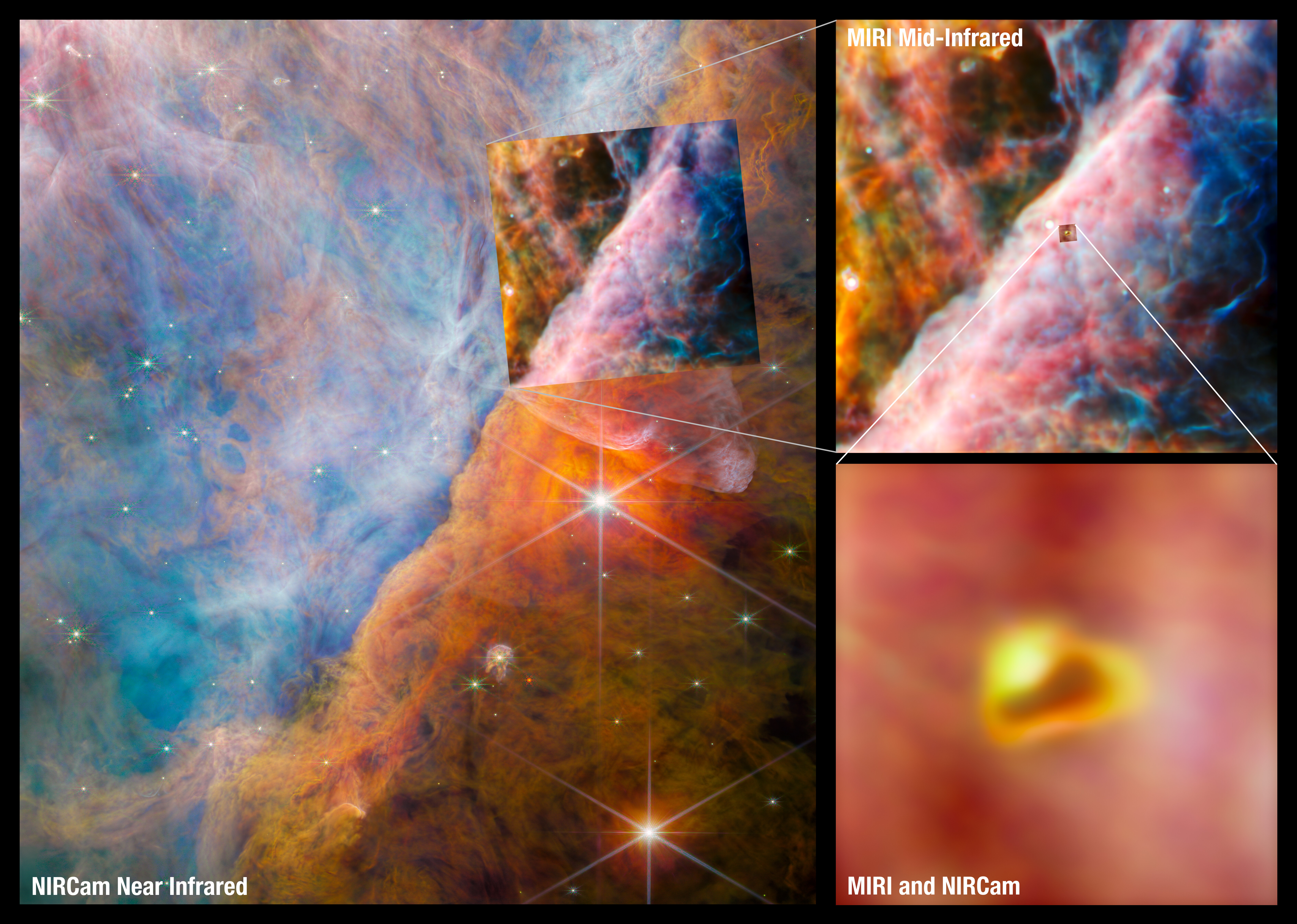DATE2023.06.27 #Press Releases
James Webb Space Telescope Discovers a Key Carbon Molecule in Interstellar Molecular Chemistry
The finding from an international collaboration offers clues to the origins of life.
June 27, 2023
An international research team from the United States and Europe, including Japan, has discovered a molecule called methyl cation (CH3+) in d203-506, an object in the Orion Nebula with a newly forming planetary system. The team made the observations through the James Webb Space Telescope (JWST), launched by NASA, ESA, and CSA.
CH3+ reacts with a wide range of molecules and elements other than hydrogen. So, it has been considered a key molecule in the formation of complex organic molecules that lead to the formation of living organisms. However, CH3+ has not been discovered in space because it does not have a characteristic transition line in the radio frequency region, which has contributed to the detection of many molecules, and thus requires highly accurate infrared observations for detection.

Webb studies the Orion Nebula using NIRCam and MIRI imaging instruments. (Left) Near-infrared image of the Orion nebula taken with NIRCam on board JWST. (Upper right) Mid-infrared image of the surrounding of the present object d203-506 taken with MIRI on board JWST. (Lower right) Enlarged image of d203-506 of NIRCam and MIRI.
Credit: ESA/Webb, NASA, CSA, M. Zamani (ESA/Webb), the PDRs4All ERS Team. The image details can be accessed here: https://esawebb.org/images/weic2315a-h1dd3n/
Now, the high infrared detection capability of JWST found a signal thought to be CH3+, and its detection was confirmed by the cooperation of theorists and experts in molecular spectroscopy. This discovery is the result of a remarkable collaboration between quantum chemistry, molecular physics, molecular spectroscopy, and astrophysics.
The object d203-506, where CH3+ was discovered, is in a region of the Orion Nebula with strong ultraviolet radiation, suggesting that ultraviolet radiation plays an important role in the production of CH3+. Such an environment may also apply to the early stages of the formation of our solar system.
Professor Emeritus Takashi Onaka of the Department of Astronomy was part of the research team.
For details, see the press release from ESA: https://esawebb.org/news/weic2315/


